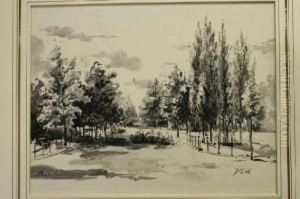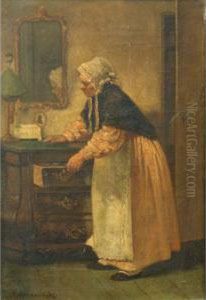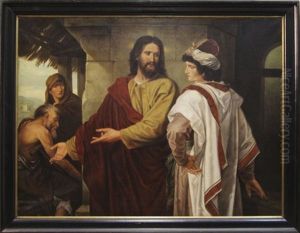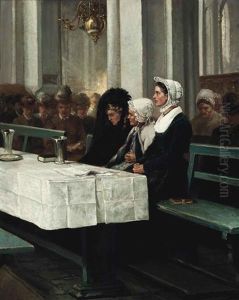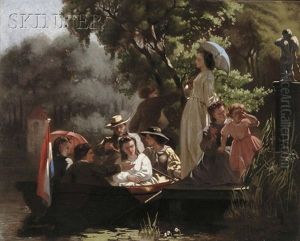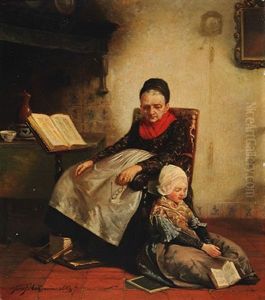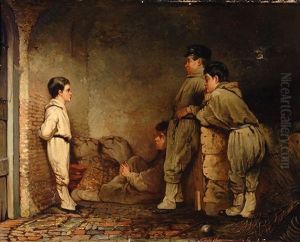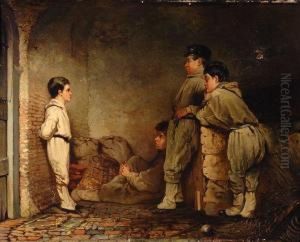Jozef Willemszoon Hoevenaar Paintings
Jozef Willemszoon Hoevenaar was a Dutch painter born in Utrecht, Netherlands, in 1801. He stemmed from a family of artists, with his lineage including a number of respected painters and draughtsmen. His father, Willem Pieterszoon Hoevenaar, was also a painter, and it was under his guidance that Jozef began his artistic training. Jozef's oeuvre mainly consisted of genre works, landscapes, and historical scenes, depicting various aspects of Dutch life and culture with a particular eye for detail and an interest in capturing the essence of the Dutch Golden Age.
Hoevenaar's work was influenced by the Dutch tradition of genre painting, which was characterized by scenes of everyday life rendered with precision and often imbued with a moral or didactic message. He was active during a period when there was a revival of interest in Dutch Golden Age painting, and his style can be seen as a continuation of that tradition, albeit adapted to the 19th-century tastes and sensibilities.
Throughout his career, Jozef Willemszoon Hoevenaar remained relatively local, with his reputation centered in Utrecht and the surrounding areas. Despite not gaining the international acclaim of some of his contemporaries, his work was well-regarded in his homeland, and he contributed to the Dutch artistic scene by not only creating art but also by passing on his skills to the next generation. He was active as a teacher, and one of his most notable students was his son, Jozef Hoevenaar the younger, who would also go on to become a painter, continuing the family tradition.
Jozef Willemszoon Hoevenaar lived a long and productive life, continuing to paint well into his later years. He died in 1886, leaving behind a legacy that was appreciated by his local community and that provided a bridge from the traditions of the Dutch Golden Age into the modern era. His works are now part of various collections in the Netherlands, including museums and private collections, where they continue to be studied and admired for their craftsmanship and historical value.
